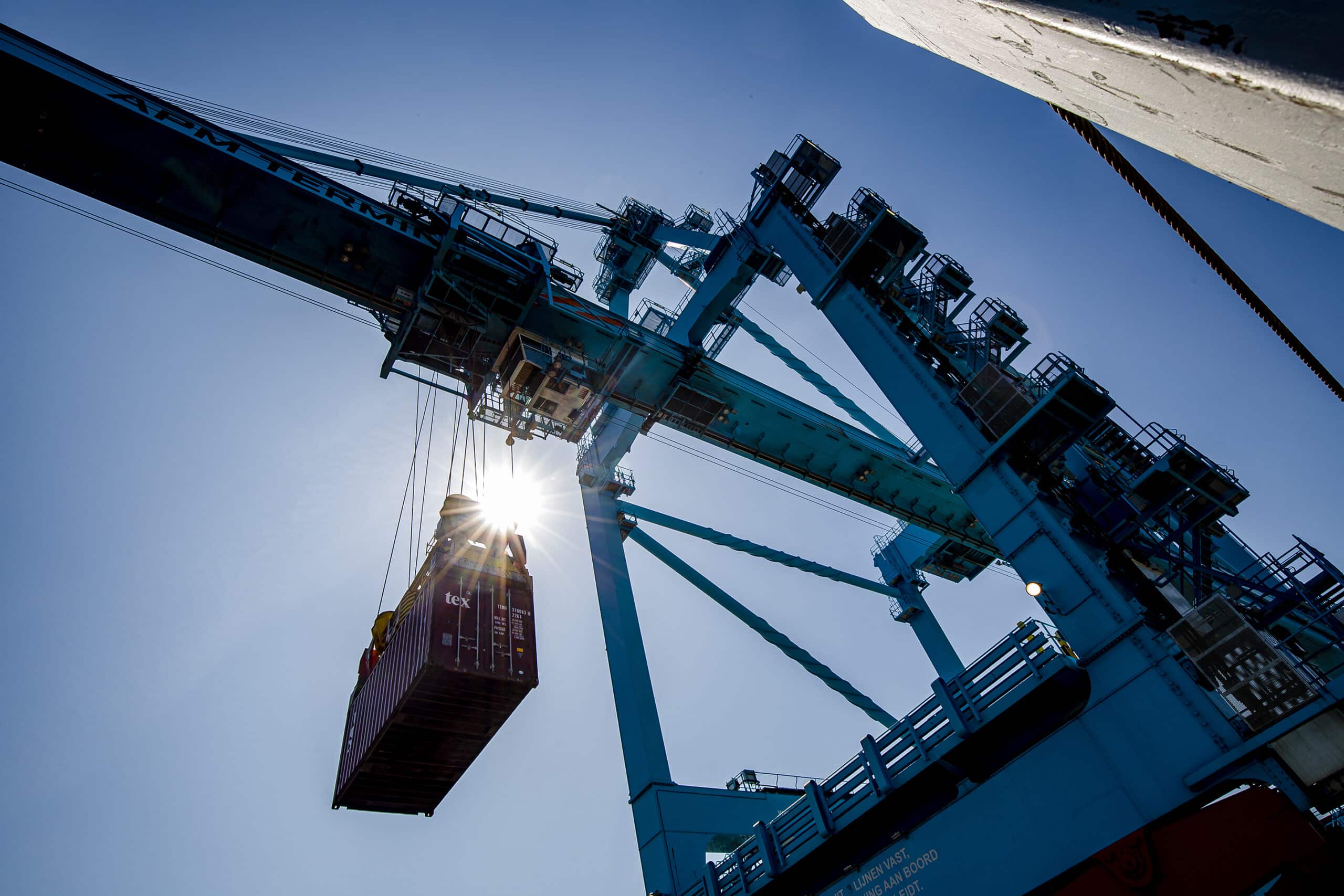The solution
From unknown to authorised
From the shipping line/ship agent via the shipper, the forwarder and the inland operator to the deepsea terminal, the Secure Chain creates a closed logistics chain that solely comprises familiar, authorised parties. PIN codes are eliminated from the process.
Together, these parties realise a digitally and physically secure release and collection process for import containers in the port of Rotterdam by means of the Secure Chain. To facilitate this, Portbase has added an additional authorisation layer to various services in the Port Community System of the Dutch ports.
The Secure Chain entails more. Read more about the other initiatives to digitally enhance the resilience of the port logistics processes here. One example is the verification of the operating carrier by the terminals.

The Secure Chain explained
This is what you do beforehand
The Secure Chain starts with the shipping line/ship agent. This party invites its customer (the so-called release-to-party) to participate. In many cases, this is the shipper or forwarder. In turn, this party informs the subsequent link in the chain about the new operational approach. Prior to the start, all parties are informed in this way and are asked to ensure that they have the correct Portbase service at their disposal. Once the entire chain is ready, the customer (the release-to-party) notifies the shipping line/shipagent of this. Now, the Secure Chain is really ready to commence.


This is how the Secure Chain works
In the Secure Chain, each participant digitally transfers the authorisation to collect a container (or have it collected) to a subsequent link in the chain. Only a inland operator that has been authorised via the Secure Chain is able to pre-notify its arrival at the terminal to next securely collect the container there. The terminal always knows who to expect.


PIN codes phased out
The introduction of the Secure Chain means PIN codes are no longer required to release and collect containers. This eliminates the potential risk of unauthorised use. The Secure Chain solely comprises familiar, authorised parties who only exchange ‘need-to-know’ data with one another in a secure manner. Together, parties are making the port logistics processes more resilient.
This is what you concretely need
To facilitate the Secure Chain, Portbase has added an extra authorisation layer to a number of existing services in the Port Community System of the Dutch ports. For new parties who need to connect to Portbase for the Secure Chain, a free basic service is available as an extra option. This makes it possible to securely transfer the authorisation to collect an import container from one link to the next for everyone.
The Secure Chain results in
The benefits at a glance
A uniform and much more secure collection process for import containers
A reliable logistics chain that solely comprises authorised parties who mutually exchange data on a need-to-know basis
Insight into the status of containers throughout the entire chain
Structural, consistently secure and trusted chain collaboration
Reuse of data by authorised parties
No costs for release and the authorisation of parties
Phased implementation
The Secure Chain is aimed at the Dutch ports. It is currently being introduced first in the port of Rotterdam. The participating shipping lines/ship agents are pursuing a phased and controlled rollout. Each shipping line/ship agent informs its own customers about the moment of connection.
Step 1
31 March 2024
No more PIN code for container cargo from Latin America
All containerised cargo from Latin America runs via the Secure Chain since the 31st of March 2024.
Step 2
1 July 2024
No more PIN code for container cargo from North America
Since the 1st of July 2024, the Secure Chain has also been in effect for incoming container cargo from North America
Step 3
1 October 2024
No more PIN code for container cargo from Africa, Middle East, India and Pakistan
Since the 1st of October 2024, the scope of the Secure Chain has been further expanded.
Step 4
3 February 2025
No more PIN for container cargo from the Far East and Oceania
All intercontinental container cargo arriving in Rotterdam now goes via the Secure Chain
Step 5
2025
Introduction of Secure Chain for the remaining container cargo for which the deepsea shipping lines / ship agents send the release
Eventually, the Secure Chain will apply to all deepsea container cargo entering Rotterdam.